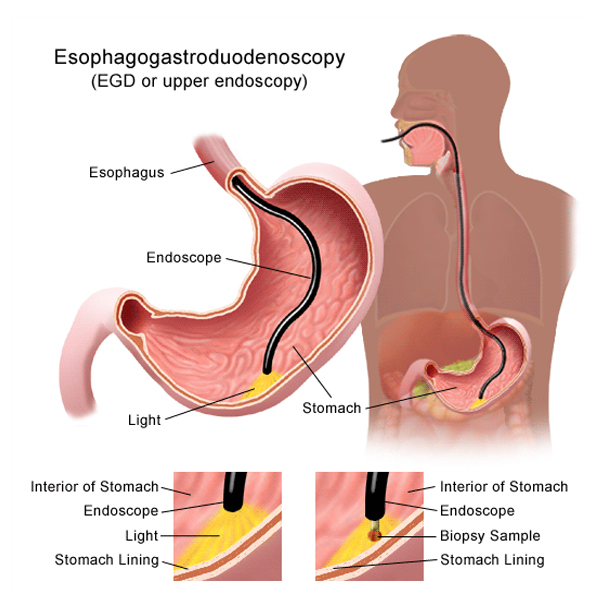Home → Upper GI Endoscopy

Upper GI endoscopy Also known as ‘procedure endoscopy’, ‘upper endoscopy’, ‘EGD’ or ‘esophagogastroduodenoscopy’ is a procedure in which a doctor uses an endoscope—a flexible tube with a camera—to see the lining of your upper GI tract. A gastroenterologist, surgeon, or other trained health care professional performs the procedure, most often while you receive light sedation to help you relax.
Doctors use upper GI endoscopy to help diagnose and treat symptoms and conditions that affect the esophagus, stomach, and upper intestine or duodenum.
Upper GI endoscopy can help find the cause of unexplained symptoms, such as:
Persistent heartburn
Bleeding
Nausea and vomiting
Pain
Problems in swallowing
Unexplained weight loss
Upper GI endoscopy can be used to identify many different diseases:
Gastroesophageal reflux disease(GERD)
Ulcers
Cancer
Inflammation, or swelling
Precancerous abnormalities such as Barrett’s esophagus
Celiac disease
Strictures or narrowing of the esophagus
Blockages
Upper GI endoscopy can check for damage after a person eats or drinks harmful chemicals.
During upper GI endoscopy, a doctor obtains biopsies by passing an instrument through the endoscope to obtain a small piece of tissue for testing. Biopsies are needed to diagnose conditions such as
Cancer
Celiac disease
Gastritis
Doctors also use upper GI endoscopy to
Treat conditions such as bleeding from ulcers, esophageal varices, or other conditions
Dilate or open up strictures with a small balloon passed through the endoscope
Remove objects, including food, that may be stuck in the upper GI tract
Remove polyps or other growths
Place feeding tubes or drainage tubes
Doctors are also starting to use upper GI endoscopy to perform weight loss procedures for some people with obesity.